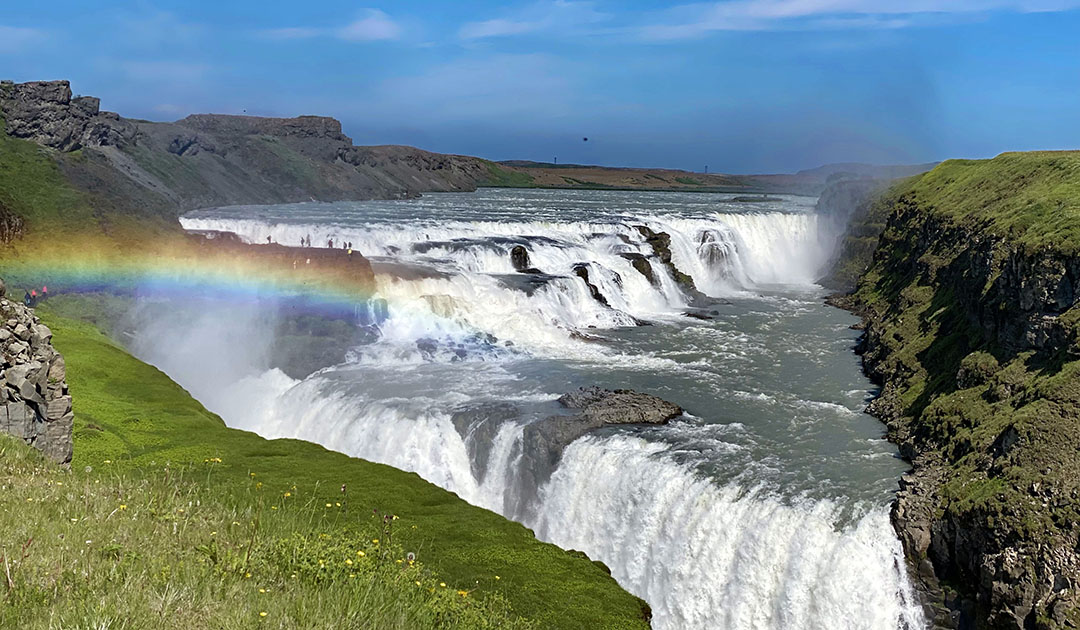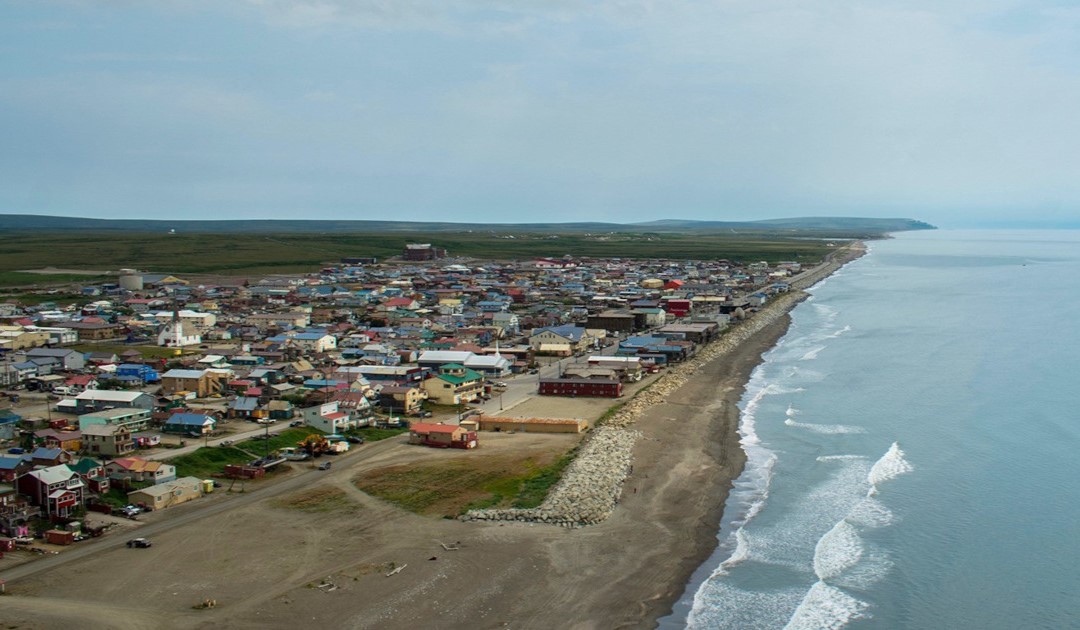
Arctic communities are growing and need energy. Decarbonized energy is attracting the interest of political decision-makers and certain investors and companies. These topics dominated the energy debates at the Arctic Circle Assembly.
Decarbonizing the economy took center stage last Friday and Saturday at the Reykjavik Convention Center, during the international gathering of Arctic stakeholders. Decarbonization is a keyword that does not necessarily refer to renewable energies, as nuclear power is also attracting the attention of academics and investors, who believe it could help enrich the energy mix of populations in the Far North, where there is no sun in winter and no constant wind.
Leading the way in the production of electricity from wind and offshore currents, Scotland represented the European continent effortlessly. Gillian Martin, from the Scottish Department of Energy, points out that the country wants to exploit these resources and export the surplus. To do so, they intend to produce hydrogen and create a commercial hub to export it, at the very least to supply Orkney, an archipelago to the north of Scotland.

Also in Scotland, Camille Dressler, Director of the Scottish Islands Federation, lives on the island of Eigg, which has become energy self-sufficient thanks to solar panels, micro-hydro turbines and wind turbines. The island counts as many inhabitants as a one-hundred-person apartment block. Every one of them is involved in the community’s energy strategy, simply by controlling the power consumption of each appliance, or by maintaining the energy infrastructure themselves.
On a larger scale, in Glasgow, the University of Scotland is looking to optimize energy production in buildings, and they’ve found a way to heat a building using solar energy. Their system doesn’t use electricity as an intermediary between the sun and the radiator; the panel heats the interior directly. The result is an increase in efficiency from 20% to 60%. In addition, the researchers have integrated wind turbines into the building, whose shape follows the acceleration of the wind around the building.
Demand is set to triple between now and 2040
Further north, with 80% renewable energy, the Faroe Islands are following Scotland’s lead. Kári Mannbjørn Mortensen, head of the Faroese Department of Energy, unveils a production project that aims to triple the island’s current output with floating wind turbines. “We can no longer rely on our land space, we need to find other spaces,” he explains. He’s also aware that too close to the coast would be problematic for bird colonies and the landscape.
“Forty thousand square kilometers of the continental shelf are between 100 and 200 meters deep,” he describes. That’s an ideal area for projects. But the locations have yet to be defined, as the archipelago’s fishermen are already viewing this with a critical eye, fearing it could compromise fishing grounds.

The Faroes’ energy autonomy includes the propulsion of its vessels. They estimate that needs will triple between now and 2040, and by then the wind power project could reach 12 TW per year. That’s four times more than what is needed for self-sufficiency. The project therefore includes a submarine cable link to the Shetlands and Iceland.
Air Iceland plans to reduce its carbon emissions by 2050, as it is dependent on aviation, a sector that is struggling to find tangible prospects for decarbonization. The only practical way forward is to renew the fleet with new, 20% more efficient aircraft, such as the Boeing 737 Max. The sector’s main hope for weaning itself off oil is the development of hydrogen propulsion.
Tryggvi Þór Herbertsson, Professor of Economics at the University of Reykjavik, believes that Iceland is well suited to the production of hydrogen. Note that hydrogen is simply a means of transporting energy produced with electricity, which then generates electricity. The economist predicts an increase in the price of electricity production in Europe. However, Iceland and Greenland are among the cheapest regions in the world to produce electric power. He adds that the arrival of hydrogen on a large scale in Europe should begin in two, three or four years’ time.
Greenland also has enormous potential for producing decarbonized electricity. “There’s an almost cynical twist to this story, since it’s global warming that makes electricity generation possible in Greenland,” remarks Tryggvi Þór Herbertsson.

In turn, Greenland’s Ministry of Agriculture, Self-sufficiency, Energy and the Environment sees hydrogen as the central pillar of the island’s development, with a potential of 9.5 TW per year on the central west coast, and other smaller projects around Nuuk. The Ministry is also calling on foreign investors to join in.
Overcoming the uncertainties of renewable energies
But the transition won’t happen without investments. The University of Anchorage’s nuclear micro-reactor research project in Alaska acts as a reminder of this. Richelle Johnson is conducting economic research to see if the use of small nuclear reactors – comparable to those used in nuclear submarines – could be used in Alaska in communities not connected to the national grid.
She identifies a number of economic obstacles to the development of these projects: the fuel supply chain is difficult to predict, the impact of inflation is equally difficult to predict, and raw materials such as helium – essential for certain technologies – are becoming increasingly scarce. In short, all these factors complicate the evaluation of the price of these devices.
On a positive note, the deployment of nuclear power in communities in the Far North would make up for the shortcomings of renewable energies, and above all enable local production of items that today have to be imported and are very expensive for the inhabitants of these remote regions.

The transition cannot take place without the involvement of local communities, who have no confidence in the state when it comes to nuclear power. Diane Hirshberg, the project’s anthropologist, has probed history and realized that nuclear tests on the tundra over 50 years ago are at the root of this mistrust. “These stories have a huge impact on current discussions,” she tells us.
That’s why Haruko Wainwright, a professor at the Massachusetts Institute of Technology, organizes summer camps where young people are introduced to the scientific measurement of water quality. They learn how to detect pollutants, and thus gain some control over their environment.
Energy self-sufficiency and development in Arctic communities can create jobs and activity in these regions. On the island of Eigg, for example, local residents are training young people to operate electrical installations, in the hope that they will stay and work in this sector.
Camille Lin, PolarJournal
Learn more about this topic:





